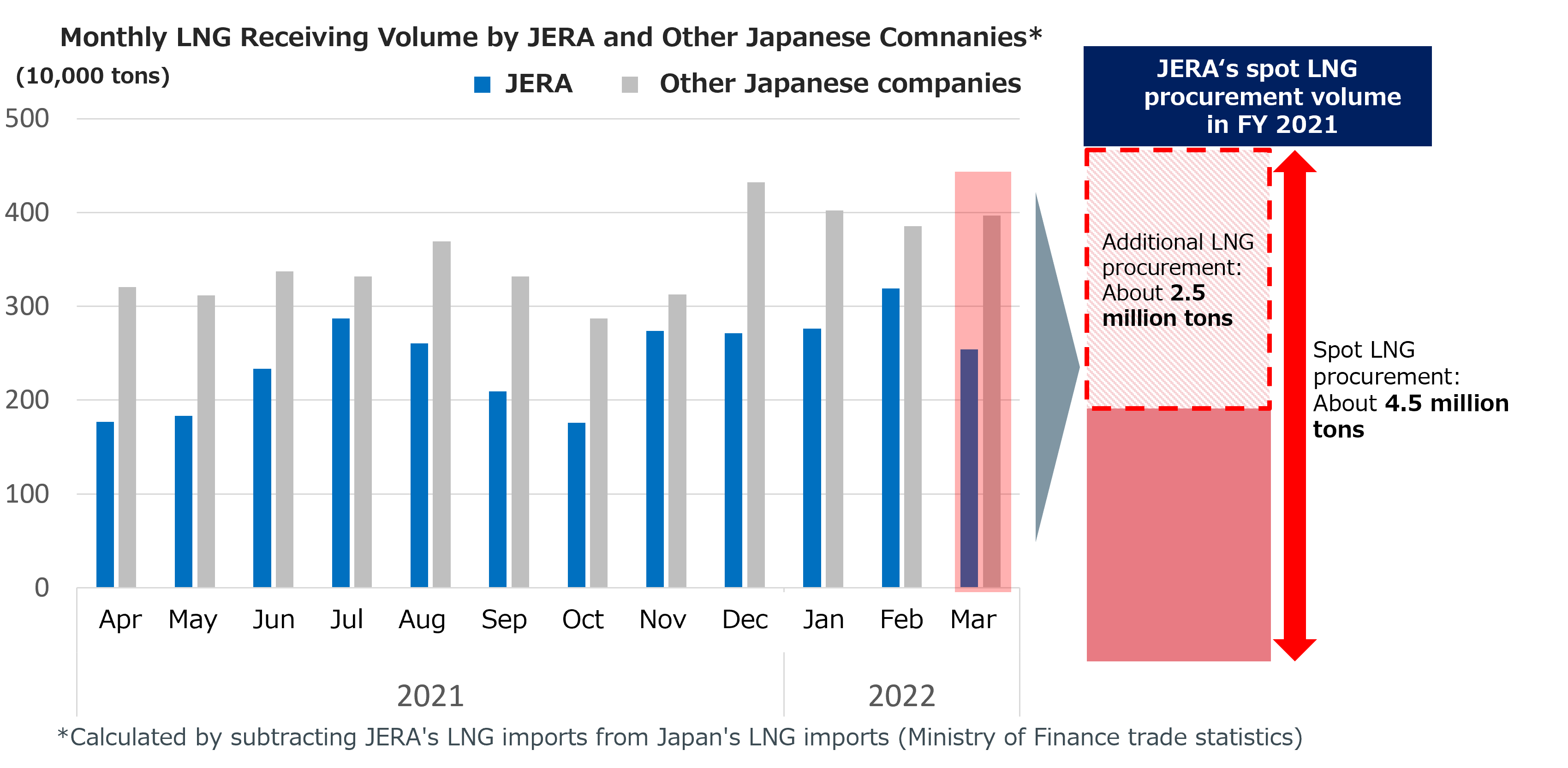Further Initiatives for a Stable Electricity SupplyOur Company / Company Profile
Due to factors such as unstable international situation and the rapid pace of decarbonization, the environment surrounding the energy business is changing dramatically with sharply rising resource prices and energy security growing in importance.
In addition, the impact of the 16 March 2022 earthquake centered off the coast of Fukushima caused extended shutdowns at thermal power plants in some areas that mean the outlook for domestic electricity supply-demand remains tight.
As Japan’s largest power producer, JERA will take the following initiatives—in addition to stable operation of its operating thermal power plants—to ensure the stable supply of electricity in Japan.
- JERA resumed operations at Anegasaki Thermal Power Station Unit 5 in accordance with its "Measures to Address the Heavy-Load Winter Season for FY2021“ announced in November 2021, and contributed to ensuring stable supply by complying with four activation directives.
- In addition, some equipment at Hirono Thermal Power Station Unit 6 was damaged as a result of the 16 March 2022 earthquake centered off the coast of Fukushima. Although repairs were initially expected to take about a month, operations were able to resume on 6 April.
- Due to the extended shutdown of thermal power stations in some regions and Russia’s invasion of Ukraine, electricity supply-demand is expected to be tight for summer and winter in FY2022 (Electricity Power and Gas Basic Policy Subcommittee, 12 April).
- The long-term planned shutdown of Sodegaura Thermal Power Station Unit 1 was lifted and preparations for operation completed on 17 April. JERA continues to consider various electricity supply-demand measures, including resumption of operations at the other thermal power plants, based on discussions with the government and related organizations.
JERA is currently moving forward with replacement work at three sites. State-of-the-art thermal power plants with a total capacity of approximately 6.66 GW has been started progressively from FY 2022 to 2024. JERA will steadily move forward with this work, contributing to the stable supply of electricity while also utilizing electricity generated through trial operation at the power plants under construction.
(Under construction)
| Goi | Yokosuka | ||||
|---|---|---|---|---|---|
| Unit | Unit 1 | Unit 2 | Unit 3 | Unit 2 | |
| Output | 780MW | 780MW | 780MW | 650MW | |
| Fuel | LNG | Coal | |||
| Start of operation |
August 2024 |
November 2024 |
March 2025 |
February 2024 |
|
(Under operation)
| Taketoyo *1 | Anegasaki *2*3*4 | Yokosuka*5 | |||
|---|---|---|---|---|---|
| Unit | Unit 5 | New Unit 1 | New Unit 2 | New Unit 3 | Unit 1 |
| Output | 1,070MW | approximately 650MW | approximately 650MW | approximately 650MW | 650MW |
| Fuel | Coal (Biomass Co-firing) |
LNG | Coal | ||
| Start of operation |
August 2022 |
February 2023 |
April 2023 |
August 2023 |
June 2023 |
*1: "Commercial Operation Begins at Taketoyo Thermal Power Station Unit 5" (August 5 2022, press released)
*2: "Commercial Operation Begins at Anegasaki Thermal Power Station New Unit 1" (February 1 2023, press released)
*3: "Commercial Operation Begins at Anegasaki Thermal Power Station New Unit 2" (April 1 2023, press released)
*4: "Commercial Operation Begins at Anegasaki Thermal Power Station New Unit 3" (August 1 2023, press released)
*5: "Commercial Operation Begins at Yokosuka Thermal Power Station Unit 1" (June 30 2023, press released)
The volume of LNG JERA handles is among the largest in the world. In FY 2021, JERA procured approximately 30 million tons of LNG for domestic use, equivalent to 40% of the total for Japan, and worked to ensure the stable procurement of fuel. In response to sudden increases in demand during the high-demand summer and winter periods, JERA contributed to fuel supply stability by procuring a record volume of approximately 4.5 million tons of LNG through JERA Global Markets Pte. Ltd.
From this fiscal year onwards, JERA will continue to cooperate with stakeholders to secure fuel in a timely manner in line with the domestic electricity supply-demand situation, and will strive for flexible procurement to contribute to fuel supply stability.


